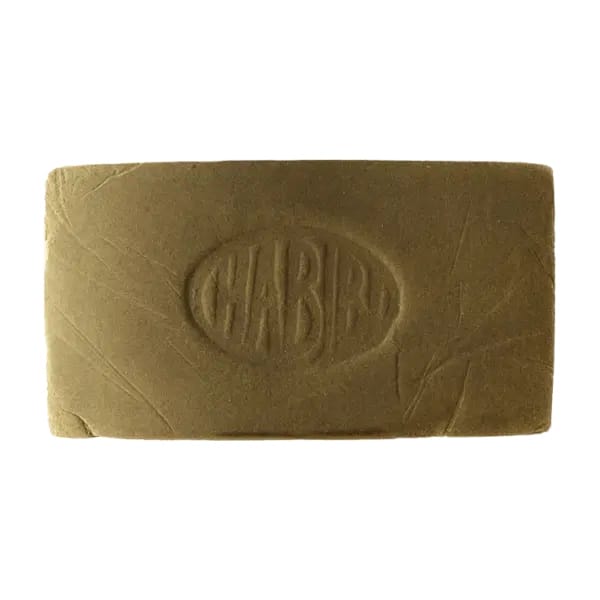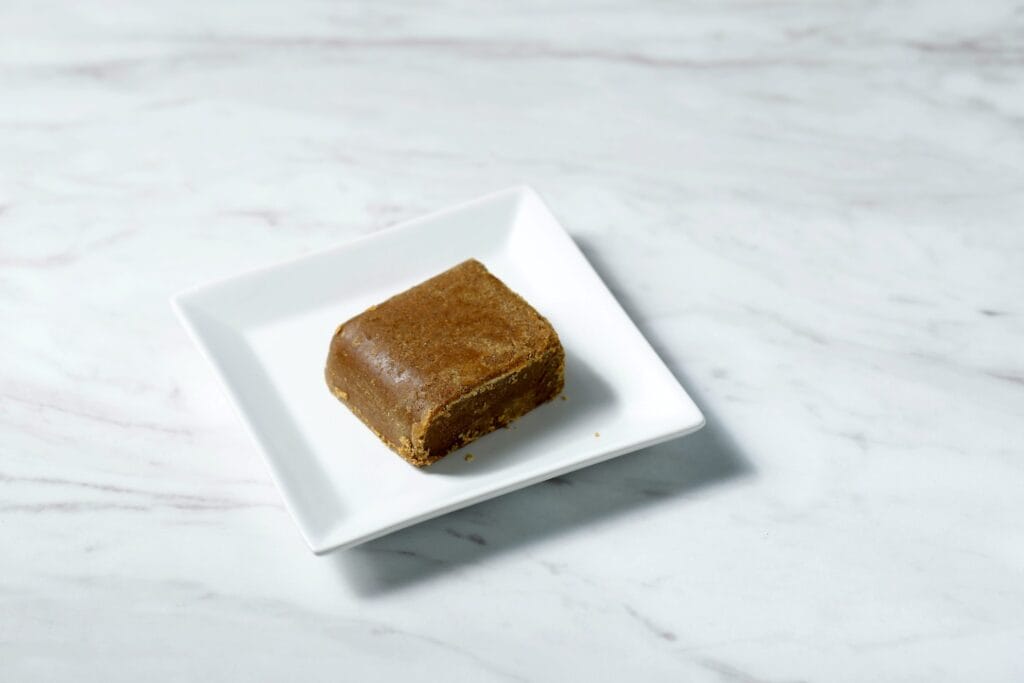Over 60% of U.S. adults have experimented with cannabidiol (CBD), as revealed in a recent Forbes Health survey. Yet, the landscape of cannabinoids is rapidly evolving beyond CBD.
Cannabigerol (CBG), another active compound derived from hemp and cannabis sativa plants, is gaining significant traction. Notably found in habibi hash, a beloved choice among enthusiasts, CBG is emerging as a stimulating cannabinoid.
Table of Contents

Cannabigerol (CBG)
Cannabigerol (CBG) is a type of cannabinoid that’s commonly referred to as the “mother of all cannabinoids.” This is because other cannabinoids are derived from cannabigerolic acid (CBGA), an acidic form of CBG. CBGA breaks down into other compounds, including THC and CBD.
CBG is found in smaller quantities than other cannabinoids in cannabis plants, such as cannabidiol (CBD) and tetrahydrocannabinol (THC). This makes consumer products derived from cannabigerol rare and expensive.
What Does CBG Do?
CBG works by interacting with the endocannabinoid system, which maintains homeostasis or harmony in our bodies, despite external stressors.
CBG may offer powerful anti-inflammatory effects without the ‘high’ that comes with THC. This means it can’t cause euphoria because CBGA doesn’t bind to the same neurological targets as its cousin THC does. CBG works by binding to the cannabinoid receptors in the brain.
The body contains the CB1 receptors, which are found in the brain and nervous system. It also contains the CB2 receptors within the immune system. By binding to both receptors, it can induce anti-inflammatory effects and also may promote a state of calmness and relaxation.
Where Does CGB Come From?
CBG is commonly present in very low concentrations (less than 1%) in most cannabis strains. CBG and other cannabinoids are stored in the trichome resin on the buds and leaves of cannabis plants.
CBG exists in its acidic form, which is CBDa. As the plant matures, CBGa is transformed into CBDa and THC, which will get converted into CBD and THC, respectively decarboxylation (burning off the carboxylic acid chain) to its more biologically active form. In this way, CBG acts as a precursor molecule to the more abundant cannabinoids.
Since CBG only exists in such small quantities in mature cannabis plants, it can be difficult to extract CBG. Many plant breeders are looking at genetic manipulation (cross-breeding desired traits in cannabis plants) to produce high CBG strains.
Some manufacturers can also extract more CBG from plants by pinpointing the timing in the flowering phase when the levels of CBG are at their highest. In addition, new extraction methods are becoming much more sophisticated at isolating desired compounds to obtain higher yields of CBG and other cannabinoids.
CBG vs. CBD
One of the biggest differences between CBD and CBG is their prevalence within the cannabis plant. Most cannabis plants contain only 1% CBG. Conversely, their level of CBD is much higher, with some research indicating that CBD is the second-most abundant compound found within these plants.
CBG also interacts differently with the endocannabinoid system than CBD. CBG binds directly to CB1 and CB2 receptors and might deliver its benefits to the system more efficiently.
But CBG shares many similarities with CBD:
- Both act on the endocannabinoid system.
- Neither is psychoactive, meaning they don’t produce a “high.”
- Each one can counteract THC’s psychotropic effects.
Hashish and Its Cannabinoid Composition
Hashish, a potent hash, is a form of cannabis (marijuana) produced by collecting and compressing trichomes. Trichomes are tiny, hair-like structures on the cannabis plant that house cannabinoids, terpenes, and other compounds.
When these trichomes are collected and processed, they form hashish, which is more potent than raw cannabis flowers due to the higher concentration of active compounds. The active ingredient of this cannabis is THC, which constitutes 10 to 15 percent of hashish.
CBG Concentration in Hashish
- Low Levels in Traditional Strains
Traditional cannabis strains contain low concentrations of CBG, with less than 1%. Thus, hashish made from these strains will also have low levels of CBG. This means that while CBG is present, its effects may not be as pronounced as those of THC or CBD.
- High-CBG Strains
Some modern cannabis breeders have developed strains with higher CBG content. These strains are specifically cultivated to maximize the presence of CBG. Hashish made from these strains naturally contains a higher concentration of CBG with different therapeutic benefits compared to traditional hashish.
Habibi Hash – Cannabis Concentrate
A study from Egypt and Saudi Arabia aimed to investigate the composition and characteristics of hashish samples from the market in Egypt. It examined the presence and ratios of cannabinoids and terpenes in the hashish samples to determine their origin and type.
Methods
Three hashish samples (A, B, and C) were obtained from different Cairo market areas. They were analyzed using GC-MS with a TSP. The samples were prepared by grinding and homogenizing and then subjected to chromatographic analysis.
Compound identification was done by comparing retention times with standards and mass spectral libraries.
Results
The study identified 23 different terpenes and ten cannabinoids in measurable quantities across all tested hashish samples. The terpenes and cannabinoids were detected using GC-MS with TSP.
The terpenes identified include compounds like caryophyllene, humulene, and nerolidol, while cannabinoids such as CBD, CBN, and THC were detected in varying proportions in each sample.
They also figured out that two of the samples were similar to hashish from Lebanon, while the other one was more like hashish from Morocco.
Key Findings
- Several methods were employed, like GC-MS with TSP, which proved to be a suitable and rapid method for screening the composition of hashish samples.
- The comparison of phenotypic indices suggests the possible origin of the hashish samples, with samples A and B being similar to Lebanese hashish (fiber-type cannabis) and sample C resembling Moroccan Habibi hash (drug-type cannabis).
Main Cannabinoid Contents of Some Local “Habibi Hash” Samples (A), (B), (C)
| Compound Name | Retention Time (Minutes) |
| Tetrahydrocannabivarin (THCV) | 17.687 |
| Cannabidiol (CBD) | 18.964 |
| Cannabielsoin (CBE) | 19.266 |
| Dronabinol (delta-9-THC) | 19.410 |
| Cannabigerol (CBG) | 19.670 |
Benefits of CBG in Cannabis
- People used cannabis preparations high in CBG to reduce anxiety.
- Between 15% and 40% of people with inflammatory bowel disease (IBD) use cannabis and cannabinoids to increase their appetite as well as to reduce their pain.
- CBG positively affects Huntington’s disease’s cell viability while protecting certain cells (N2a cells) from the toxic effects of excitatory neurotransmitters that lead to cell death when activated too long.
- CBG may also kill off inflammatory cells associated with this cancer type.
- CBG has antibacterial properties, especially against methicillin-resistant strains of Staphylococcus aureus.
Buy Premium Hash Online
| Hash Product | Description | Origin |
| Captain’s Pink Hash | Domestic hash with malleable texture and hybrid effects. Offers light buzz and is suitable for pain relief and nausea. | Domestic |
| Gevalia Hash | Hand-pressed, potent hash with chocolate colour and rich flavour from small Indica plants. | Domestic |
| Moroccan Love Hash | High-quality hash, known for extensive production. | Morocco |
| Jaguar Hash | Dark green/brown hash made without solvents. Popular for its quality and customer satisfaction. | West Coast (BC) |

Prized Hash Strain – Behind the Buzz
The appreciation for cannabis concentrates among hash connoisseurs is evident in their pursuit of the best hash. For those seeking distinct experiences, Habibi and Moroccan hash stand out with their contrasting flavours consisting of earthy tones and hints of coffee smell. GrassLife’s fine imported hash quantity impresses users, which offers enthusiasts a premium choice in their cannabis journey.
Frequently Asked Question
How is CBG extracted from cannabis plants?
One of a few different methods is solvent extraction, where solvents like ethanol or CO2 dissolve and separate CBG from plant material. Another approach is through chromatography, where
CBG is separated from other cannabinoids based on their different chemical properties. Some manufacturers also employ advanced techniques like molecular distillation or fractional crystallization to refine and concentrate CBG extracts.
How can I identify hashish with high CBG content?
- Strain selection
- Lab testing and COAs
- Detailed product labels and descriptions
- Knowledgeable dispensary staff
- High-CBG-specific products
- Online reviews and community recommendations
How do you smoke hashish?
- Break up a small piece of hashish into a crumbly texture.
- Place it in a pipe, bong bowl, or mix it with cannabis/tobacco for a joint.
- Apply flame and inhale slowly to ignite the hashish.
- Draw smoke into your lungs steadily.
- Release smoke and enjoy the effects.
- Start with small amounts, control heat to avoid burning, and clean your smoking device regularly for best results.
Related Articles:



